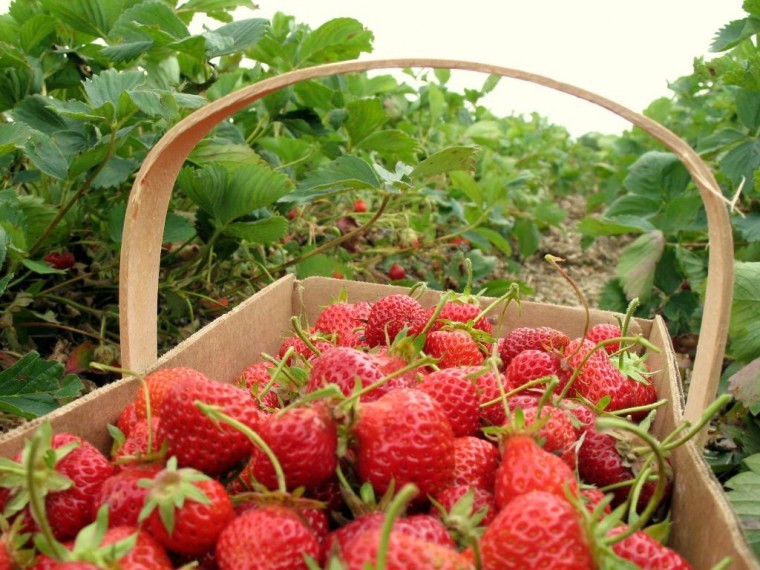Since the Brexit vote, farmers and growers have been concerned that if the UK leaves the European Union single market, there won’t be enough migrant labour to pick fruit and vegetables in particular.
Recent comment and research has suggested that automation, including robotics, could be the answer. But the latest projects developing fruit robots are far from being systems which can work outside the laboratory in difficult field environments. South East Farmer has been told that any robust robot for picking strawberries in polytunnels is at least five years away – and even then it may not replace the need for people to help with harvesting.
AUTOPIC, a three year project to try to develop a robot to pick strawberries, is just ending and has been given a brief extension. Late last year, Cambridge Consultants announced that they had developed a robot which could select and pick up fruit in a bowl according to colour. Thanet Earth, which is putting the finishing touches to its fifth giant greenhouse in Kent, is starting a three year collaborative project called Automato to try to build a robot which will recognise top quality ripe tomatoes and then harvest them.
“To be able to know where strawberries are and how to get at them is really quite difficult,” said Stephen Pattenden from Telemtry Associates Ltd in Norfolk, which is managing the AUTOPIC project. “The robot has to work out the ripeness, exactly how the strawberry is hung, cut the peduncle off just above the strawberry and put it in a punnet – all in the target time of five seconds. That is the scale of difficulty we are facing.”
AUTOPIC’s project brief says it is designing a picking head on a robotic arm with image and other sensors which can locate ripe strawberries, grab and sever the stalk, grade the berry and place it in a punnet. Mr Pattenden said that the robotic arm is developed and available, but making the sensors function accurately enough to pick the strawberries has proven far more difficult. “The sensors have to work like human eyes in stereo vision so that they can tell, for example, whether there are any blemishes on the fruit and what the state of growth is before they pick it. We are not sure whether we can do that yet.”
AUTOPIC began soon after the end of the seasonal agricultural workers scheme, which relied on the free movement of EU workers to bring in migrant seasonal fruit pickers. At the time, the projects backers – including the Biotechnology and Biological Sciences Research Council – noted that labour issues are not confined to the UK, and if AUTOPIC was successful, there would be a “significant” export market.
It was also noted that the wholesale price of fruit delivered to supermarkets is between £2,500 to £3,000 per tonne and over the nine month picking season, a seasonal picker picks around two tonnes of fruit per month at a labour cost of about £1,380/month. “Our goal for AUTOPIC is to meet or improve on human fruit picking performance with greater consistency and a capability of 24/7 working at lower operational cost while lessening the management overheads associated with seasonal labour.”
But Samuel Rowe, general manager for varieties at BerryWorld – a partner in the AUTOPIC project and supplier of strawberries and other soft fruit to supermarkets – questioned whether a grower would want to spend money on robot pickers when the outcome of Brexit could take years to resolve. “Do you want to have funds tied up in something like this and then find you still have a workforce available after all? And do you want to develop something else when you are just adding to overheads rather than variable costs?”
Mr Rowe added that there was a difference between demonstrating a robot picker in a laboratory and making one work in a difficult outside environment. “I think we are a good five years away from having something which is commercially available.” Although there are robot pickers working in the United States and Holland, for example, the systems do not match the specification required for UK growers. “The problem is the sensitivity in those systems,” Mr Rowe explained. “In the US, they are working with much harder varieties, so they can use more pressure to pick them. Also, we grow our strawberries in substrate on table top systems, whereas in the US, they are grown in the ground.”




